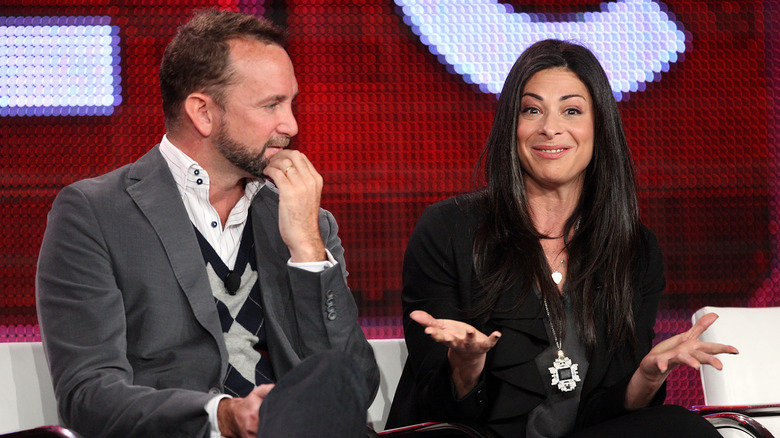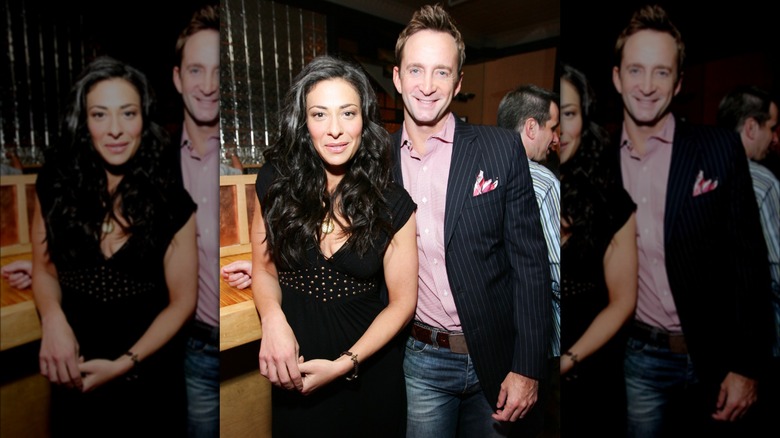TLC's What Not To Wear Was More Problematic Than We Thought
Back in the 2000s, TLC's "What Not to Wear" was a staple of reality television, with hosts Stacy London and Clinton Kelly giving secretly nominated clients a massive wardrobe makeover. Throughout its 12 seasons — with "What Not To Wear" being canceled by the network in 2013 – the series garnered a reputation for its seemingly fashion-hopeless contestants, often harsh hosts, and practical styling advice.
Many clients appeared to leave the show with boosted confidence and improved styling knowledge, but looking back at the reality series through a modern lens reveals some of its more problematic aspects. While there were definitely individual moments when "What Not to Wear" went too far, the show overarchingly perpetuated harmful and fatphobic ideas about fashion and bodies, many of which still prevail in modern culture.
On top of that, the styling choices ended up being pretty cookie-cutter and corporate, with London even admitting that she no longer lives by many of the fashion rules she and Kelly spouted. Now that we're over a decade removed from the "What Not to Wear" series finale, we hope that we can all move on to practicing fashion in a much more inclusive, celebratory way.
'What Not to Wear' pushed fatphobic ideas
It's no secret that harmful body standards and toxic diet culture pervaded the 2000s, infiltrating everything from celebrity lifestyles and tabloid covers to sitcom jokes (we're looking at you "Friends") — and, of course, reality television. TLC's "What Not to Wear" was not immune to fatphobic and skinny-centric sentiments, with the show constantly pushing "flattering" and "slimming" clothing in a way that underscored the idea that we should always look as tiny as possible.
In a collaborative essay from Bustle, Fashion & Beauty Editor Olivia Muenter opened up about how the early days of her fashion journey were dictated by the belief that she couldn't wear certain garments or styles because of how they would make her body look. She wrote, "This was perpetuated by hours and hours of watching makeover shows, and the never-ending message that learning how to 'work with your body shape' was paramount to dressing well."
While we're all for feeling good in our clothing, being and looking skinny is not the prerequisite that "WNTW" would have you think. Instead, we should embrace the fashion and garments that we love regardless of how they conform to accepted style rules. "The norm changes when we actively push against it," Alyssa Mass, therapist and eating disorder specialist, told Glamour. "If we want to feel better about our bodies, it's important to reframe and restructure and rewrite the toxic messages we were all sold as fact."
The TLC show squashed unique style
After watching a few episodes of "What Not to Wear," you'll start to notice a few patterns. While some of the show's contestants are picked because they are seemingly lost when it comes to style, others are nominated because their fashion choices are too far from the "norm." Consider Denise, a flight attendant whose Barbiecore-meets-Y2K fashion choices can be seen on YouTube.
While her style is pretty close to what you might find in a niche fashion sphere on TikTok, the TLC hosts picked it apart for being too glitzy and goofy. Stacy London and Clinton Kelly instead pushed Denise towards more corporate fashion choices, which is another running theme of the show. While they attempted to keep some of the contestants' personalities in their updated wardrobes, they are undoubtedly left with clothing that is much more office-centric than before, losing much of the uniqueness they started with. Ultimately, this is a sad approach to fashion, as it emphasizes mass appeal over individuality.
At the same time, it's undeniable that dressing conventionally, both in accepted styles and for your body type, does have an impact on how the world perceives you. Addie Broyles reflected on how her "WNTW" wardrobe makeover affected her everyday life. "[A]s soon as I started dressing better, wearing heels and nice slacks to work and dresses to dinner parties, people started listening to my ideas," she wrote for the Austin American Statesmen. So, while we can't blame "What Not to Wear" for perpetuating these existing values and ideas, we're hoping we can collectively move past them.

